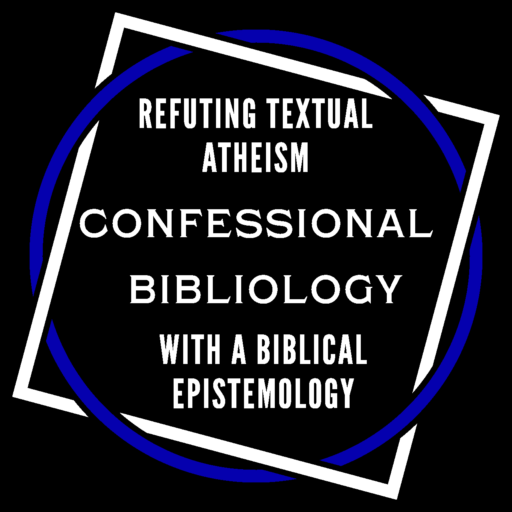Introduction
In recent years, modern English Bible translations have increasingly favored critical Greek and Hebrew texts over the traditional Textus Receptus and Masoretic texts. Advocates of these modern translations, including prominent figures like Mark Ward, argue that this shift provides a more accurate reflection of the original Scriptures. However, underlying this transition are significant theological implications that often go unaddressed. This article contends that Ward’s endorsement of the critical text, alongside his acceptance of the Septuagint over the Masoretic text in certain instances, unintentionally aligns with Arian interpretations of core Christian doctrines.
Arianism, a theological position named after Arius, challenged the eternal nature of Christ and denied His co-equal divinity with the Father, viewing Him instead as a created being. While Ward does not explicitly affirm Arianism, his support of critical text readings in verses such as Proverbs 8:22, Micah 5:2, John 1:18, and 1 Timothy 3:16 has, as this article will demonstrate, serious consequences for doctrinal integrity. Specifically, the language shifts in these verses—particularly in John 1:18—subtly support an Arian-like Christology that denies the eternal Sonship and full deity of Christ. Additionally, phrases such as “only begotten Son” are often replaced by “one and only” or “only God,” fundamentally altering the doctrines of Christ’s unique nature and the believers’ adoption as children of God.
The implications of such changes are profound. By examining these passages and contrasting traditional and modern renderings, this article aims to show how Ward’s preference for the critical text and Septuagint-based interpretations logically leads to a doctrinal perspective that undermines the orthodox view of Christ’s nature and God’s redemptive relationship with believers. In doing so, this article will demonstrate that Ward’s translation choices, while likely made in good faith, inadvertently align with the very Arianism that the early church condemned. Through a close, scholarly analysis, we will explore the doctrinal shifts that arise from modern translations and consider the potential dangers they pose to the Christian faith.
Section 1: The Textual Basis of Doctrinal Accuracy
The question of which Greek and Hebrew texts should serve as the basis for translation into English has far-reaching implications, not only for accuracy but for doctrinal integrity. For centuries, the church has relied on the Textus Receptus in Greek and the Masoretic Text in Hebrew as the foundation for the Authorized Version (KJV) and other traditional translations. However, the rise of textual criticism and modern scholarship has led to a shift toward critical editions of the Greek New Testament and an increasing reliance on the Septuagint, a Greek translation of the Old Testament. This shift has not only changed the wording of Scripture but also introduced subtle theological adjustments that align with viewpoints historically deemed heretical, such as Arianism.
A. The Historical Reliance on the Textus Receptus and Masoretic Text
The Textus Receptus (TR), first compiled by Erasmus and later refined by Stephanus, Beza, and others, became the standard Greek text for the New Testament in the Protestant Reformation. This text reflects what many scholars and Reformers considered the authentic Greek New Testament, in line with the providential preservation of Scripture. Its widespread acceptance signaled a commitment to a stable, received text, which the Reformers believed had been safeguarded by God through the ages. Similarly, the Masoretic Text, compiled and preserved by Jewish scholars, represents the traditional Hebrew text of the Old Testament. Its meticulous transmission underscores a commitment to accuracy and reverence for God’s Word.
The Reformers’ reliance on these texts was not merely a matter of textual preference but a reflection of their theological commitments. They saw the TR and the Masoretic Text as the authentic and providentially preserved Word of God. In rejecting alternatives that deviated from these texts, they upheld the integrity of Scripture, viewing the TR and Masoretic Text as foundational to the faith. This foundation played a significant role in shaping orthodox doctrines, including the nature of Christ, the authority of Scripture, and the understanding of salvation. In essence, the choice of text was inseparable from the doctrines that these texts supported.
B. The Rise of the Critical Text and the Shift in Doctrine
With the development of textual criticism in the 19th and 20th centuries, a new approach to Scripture emerged. Scholars such as Westcott and Hort developed critical editions of the New Testament based on older manuscripts, such as Codex Sinaiticus and Codex Vaticanus. While these manuscripts may be older, their reliability is a matter of debate. Advocates for the critical text argue that these manuscripts bring us closer to the original text of the New Testament. However, the critical text differs significantly from the TR, with many notable omissions, additions, and word changes that impact key doctrines.
One of the fundamental issues with the critical text is that it reflects a different theological perspective. For instance, in John 1:18, where the TR reads “the only begotten Son,” the critical text reads “the only begotten God.” This change, seemingly minor, carries profound theological consequences, as we will explore in later sections. By adopting the critical text, modern translations often introduce ambiguities or alternative readings that were historically used to support Arian and Unitarian interpretations of Christ. The critical text’s divergence from the TR is not merely academic; it is doctrinal. It changes how we understand the nature of Christ, the reliability of Scripture, and the authority of God’s Word.
C. The Septuagint and Its Influence on Modern Translations
In addition to the critical Greek text, many modern translations have increased their reliance on the Septuagint (LXX) for Old Testament passages. The Septuagint, a Greek translation of the Hebrew Scriptures, was created in the centuries before Christ and is valuable for historical and linguistic study. However, it is also a translation with its own interpretative choices, sometimes diverging from the Masoretic Text in ways that affect doctrine. The Reformers, particularly within the Protestant tradition, placed their trust in the Masoretic Text, viewing it as the authentic Hebrew Bible. In contrast, the LXX, while historically significant, was considered secondary to the Hebrew text for doctrinal purposes.
One of the primary doctrinal concerns with relying on the LXX in modern translations is that it sometimes supports readings that diminish the eternal nature of Christ. For example, Proverbs 8:22 in the LXX reads, “The Lord created me,” rather than the Masoretic Text’s rendering, “The Lord possessed me in the beginning of his way.” This wording has historically been used by Arians to argue that Christ, symbolized by Wisdom, was a created being rather than eternally begotten. Such shifts are not trivial; they have a direct impact on how Christians understand Christ’s nature. By elevating the LXX in certain passages, modern translations inadvertently open the door to interpretations that undermine orthodox Christology.
D. Doctrinal Consequences of Shifting Away from Traditional Texts
The move away from the TR and the Masoretic Text to the critical text and LXX-aligned translations is not simply a matter of textual preference or scholarly debate. It has tangible consequences for doctrine, particularly in areas that are foundational to the Christian faith. The choice of text affects how verses are rendered, which in turn shapes how readers understand key doctrines such as the deity of Christ, the authority of Scripture, and the adoption of believers as children of God.
For instance, in Micah 5:2, the KJV renders the prophecy of Christ as “whose goings forth have been from of old, from everlasting,” emphasizing His eternal nature. However, modern translations, influenced by the critical text and occasionally the LXX, often render this as “from ancient times,” a phrase that weakens the assertion of Christ’s eternal pre-existence. Similarly, John 1:18’s shift from “only begotten Son” to “only begotten God” has historically been used to support Arian arguments that deny Christ’s eternal Sonship and full deity. These are not minor doctrinal points; they strike at the heart of Christian orthodoxy.
Mark Ward’s advocacy for the critical text and modern translations, whether intentional or not, aligns him with these doctrinal shifts. His rejection of the traditional Greek and Hebrew texts opens the door to interpretations that diminish the orthodox understanding of Christ’s deity and the believers’ relationship with God. While Ward may not endorse Arian theology explicitly, his support of critical text translations has unavoidable doctrinal ramifications. By aligning with texts that historically have been used to support heretical views, Ward, and others who endorse the critical text, contribute to a gradual erosion of traditional doctrines.
Conclusion of Section 1
In conclusion, the choice of biblical texts—whether the Textus Receptus and Masoretic Text or the critical text and Septuagint—has far-reaching implications beyond simple wording differences. The traditional texts have been foundational to orthodox Christianity, preserving doctrines that the church has historically upheld as essential. In contrast, the critical text and increased reliance on the LXX introduce readings that weaken or alter these doctrines, especially concerning Christ’s nature. By endorsing these modern texts, Mark Ward and others may unwittingly contribute to a theological trajectory that aligns with Arianism, a view long rejected by orthodox Christianity. This section has laid the groundwork for examining specific verses and how modern translation choices directly impact core doctrines, demonstrating the dangers of departing from the authentic texts.







